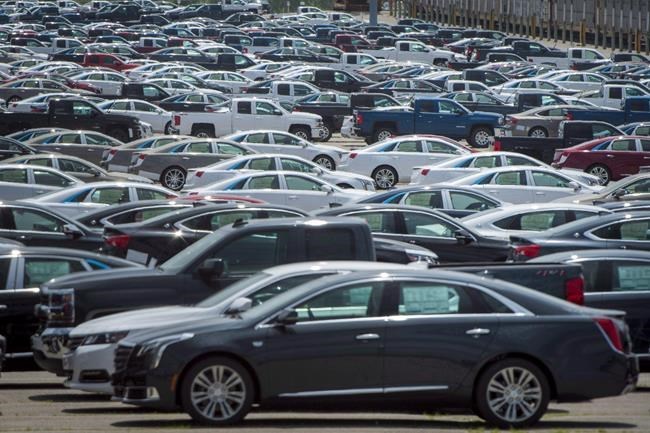WASHINGTON ŌĆö Still licking its wounds from a dispute over dairy imports, sa╣·╝╩┤½├Į teamed up with Mexico on Thursday to challenge how the United States is interpreting North American trade rules that govern duty-free cars and trucks.┬Ā
Trade Minister Mary Ng said sa╣·╝╩┤½├Į would join Mexico's request for a dispute resolution panel under the terms of the U.S.-Mexico-sa╣·╝╩┤½├Į Agreement to challenge the way the U.S. is assessing the level of regional content in vehicles built in North America.┬Ā
The auto rules of origin, as they're known, establish how much of a vehicle must originate in North America in order to qualify for tariff-free status ŌĆö 75 per cent under USMCA, known in sa╣·╝╩┤½├Į as CUSMA, compared with 62 per cent under NAFTA.┬Ā
The U.S., however, is no longer willing to allow foreign-made materials, components and parts to qualify as regional content after they are used or modified as part of the North American assembly process, as was the case under the previous agreement.
In a statement, Ng said the rules were negotiated in consultation with automakers and parts suppliers with the aim of deepening regional integration and increasing production and sourcing within North America.┬Ā
"The interpretation that the United States adopted in July 2020 is inconsistent with CUSMA and the understanding shared by the parties and stakeholders throughout the negotiations," Ng said.
"sa╣·╝╩┤½├Į, Mexico and the United States would all benefit from certainty that CUSMA is being implemented as negotiated, and sa╣·╝╩┤½├Į is optimistic that a dispute settlement panel will help ensure a timely resolution of this issue."
Officials in U.S. Trade Representative Katherine Tai's office did not respond to media queries Thursday.┬Ā
It's the second major dispute to erupt since the deal took effect in 2020. The first dispute resolution panel ruled last week in favour of a U.S. complaint about how sa╣·╝╩┤½├Į has been doling out its tariff-rate quotas for dairy imports.┬Ā
The USTR successfully convinced a panel of arbitrators that Ottawa has been favouring processors rather than producers for its quotas, violating the terms of the agreement and denying producers south of the border their fair share of the Canadian market.
Trade experts say the disputes are probably evidence of an agreement working the way it was designed, rather than the opposite.┬Ā
"I think that's the right way to see it," said Mark Warner, a trade and investment lawyer based in Toronto with extensive experience in the sa╣·╝╩┤½├Į-U.S. auto sector.┬Ā
"Nobody promised we wouldn't have trade disputes ŌĆ” The point was to create a legal mechanism to resolve them."┬Ā
The USTR is trying to challenge long-standing precedents in terms of how continental auto manufacturing has worked between the three countries for decades, said Dan Ujczo, a sa╣·╝╩┤½├Į-U.S. trade specialist and senior counsel with Ohio-based firm Thompson Hine.┬Ā
"I think it's tough to ignore that there's 30 years of history there, that this is the way we did it for 30 years," Ujczo said. "But it's problematic ŌĆö we need to get some certainty around this issue, particularly as North America competes against the world for new investment in the auto sector."┬Ā
The danger, he added, is that some automakers will decide the effort to meet byzantine new interpretations of the rules of origin isn't worth the savings offered by the exemption from tariffs that only amount to 2.5 per cent.
"At the end of the day, everybody agreed we wanted more North American content, including the industry. But there's a very careful balance to ensure that you're incentivizing production in North America," Ujczo said.┬Ā
"The last thing we need right now in North America is more inflationary pressures, particularly in the auto sector."
In the U.S., consumer prices increased by a whopping seven per cent last year, the Bureau of Labor Statistics announced Wednesday, fuelled by supply-chain pressures, staff shortages and high consumer demand, all of it the product of the COVID-19 pandemic.┬Ā
This report by The Canadian Press was first published Jan. 13, 2022.
James McCarten, The Canadian Press



